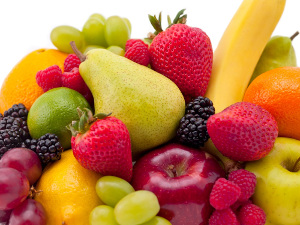Report reveals secrets to Dutch strawberry success

Agri-food economist Frank Rijkers of Dutch bank ABN-AMRO has shared his market report findings into the Netherlands' strawberry industry with www.freshfruitportal.com. We take a look at his in-depth analysis including what factors have driven strawberry production to increase by 50% since 2000, and what opportunities lie ahead for the strawberry sector.
Since the turn of the millennium, strawberry production in the Netherlands has been building steadily with average annual volume increases of 2.4%, culminating in a record year for 2013 with 51 million kilograms (12 million pounds). 
One of the reasons for the consistent growth and bumper crops is the simultaneous escalation of growing under glass within the sector, according to Rijkers' economic examination of the last 14 years.
"Increasingly covered cultivation under glass protects the product against offensive weather. In addition, the season can thus be extended allowing Dutch strawberries to be delivered virtually all year round," Rijkers says in the report.
"The emergence of growing strawberries in greenhouses or tunnels continues unabated."
Substantial growth in strawberry cultivation
In 2000 there was a total of 180 hectares grown under glass representing 13% of the total strawberry cultivation. Last year this almost doubled to 341 hectares, which means 20% of the country's production of the crop now comes from greenhouses.
"Most of the strawberry production is therefore still grown in open ground. The growth of acreage has also increased the production. The average farm size in 2013 was 2.9 acres compared with 1.2 acres at the beginning of the Millennium," he says.
According to the report, the focus should now steer away from production as the Dutch have that pretty much wrapped up; instead the focus needs to turn to different varieties, promoting the distinctive quality of Dutch fruit and capitalizing on new markets while deepening existing ones.
Rijkers asks, 'But what are these opportunities?'
Maintaining a strong market position is one with a real concentration on 'seeing and seizing opportunities'.
With regards to exports and distribution, the Netherlands splits its market 50-50 between domestic and abroad.
"For years, from the total strawberry production in the Netherlands about half were sold abroad. In absolute numbers this means an increase in the number of exported kilograms.
"For example, in 2008 more than 2.1 million kg (4.6 million lbs) of strawberries were exported compared to 26.2 million kg (57.3 million lbs) in 2013, this is an increase of 23%.
"The main exporting country is Belgium with a 48% share in total strawberry exports. Germany and the U.K. follow as popular export destinations with shares of 17.5% and 12.2% respectively."
Rijkers says that because of the limited shelf life of strawberries, neighboring countries will remain the main markets and the ones where there are more possibilities for export growth.
"In addition, the strawberry is seen as a luxury product. There are also opportunities in the short term in western and northern European countries.
"Increasing prosperity in Eastern Europe makes this region a logical growth market for the longer term. Good logistic processes are the decisive factors for cashing in these growth opportunities."
The risks of overproduction
Despite the steady growth over the last decade or more, the Netherlands has not suffered from overproduction and the associated economic issues.
However, the industry as a whole needs to be aware of the possible risks.
"The strong output growth in the past decade does not seem to have disrupted the market, yet the Dutch growers should be vigilant for overproduction.
"The Netherlands already has a limited share of around 5% of total European strawberry production, causing overproduction mainly by countries such as Spain (25%), Poland (15%), Germany (14%), Italy (14%) and Great Britain (10%).
"However, it should be noted that in addition to the other countries, Spain mainly produce for its own domestic market. Import of the Spanish product happens especially in spring because there is less supply from the Netherlands."
Rijkers describes the taste and quality of such imports as 'low-level', and explains how the growth in growing under glass has helped the Netherlands supply a superior quality fruit.
"This competition with the Spanish product expands the share of the Dutch product in our neighboring countries year on year.
"To continue to exploit this, Dutch producers will have to think about marketing and increase the popularity of strawberries."
Strawberry status
The average consumption of strawberries among the Dutch is 1.48 kg (3.26 lbs) per person, while the European average is more than 0.5 kg (1.1lbs) higher at 2.16 kg (2.76lbs) per person per year.
This is a statistic that needs to change, says Rijkers, who suggests the industry has to promote its home-grown fruit to the Dutch population.
"We must start [marketing] in our own country. It is the high quality of the Dutch strawberry as well as the virtually year round availability that should be emphasized.
"In short, there are plenty of opportunities for the summer king of fruits to expand his kingdom, but the industry needs a clear vision."
Photo: www.shutterstock.com















































